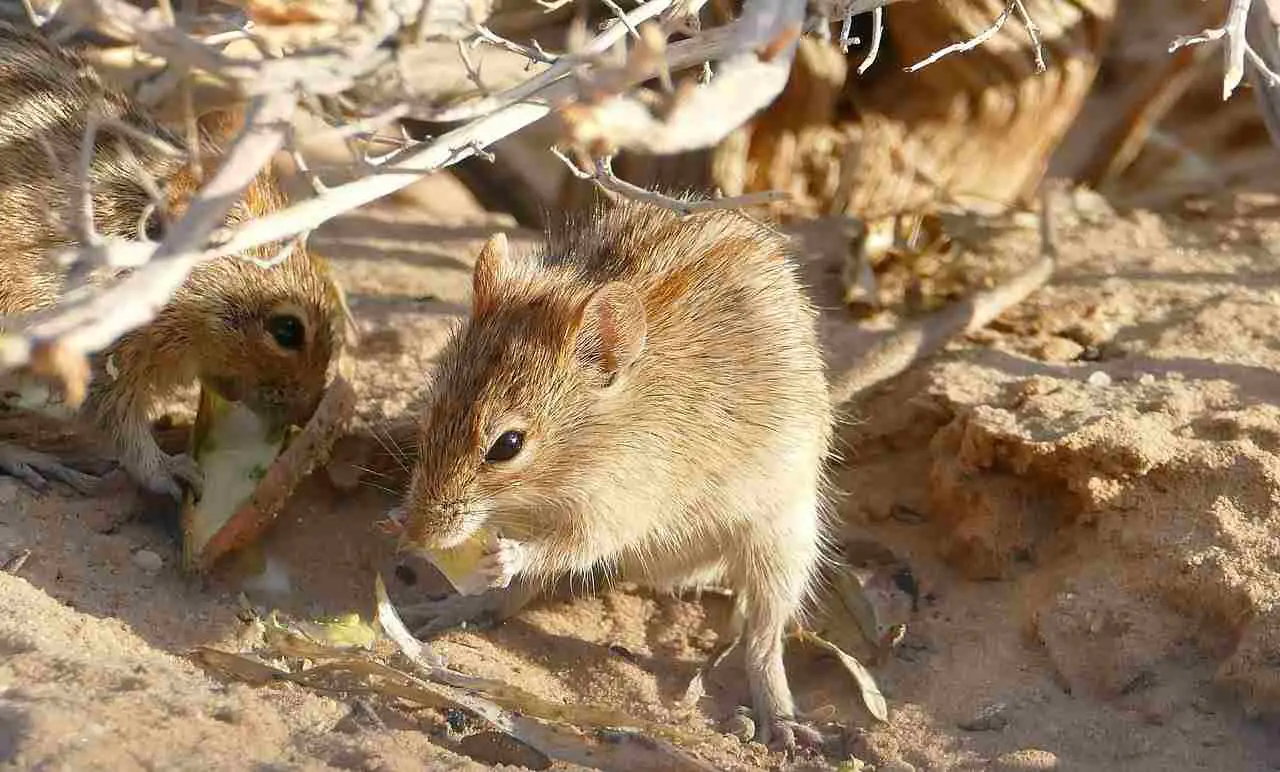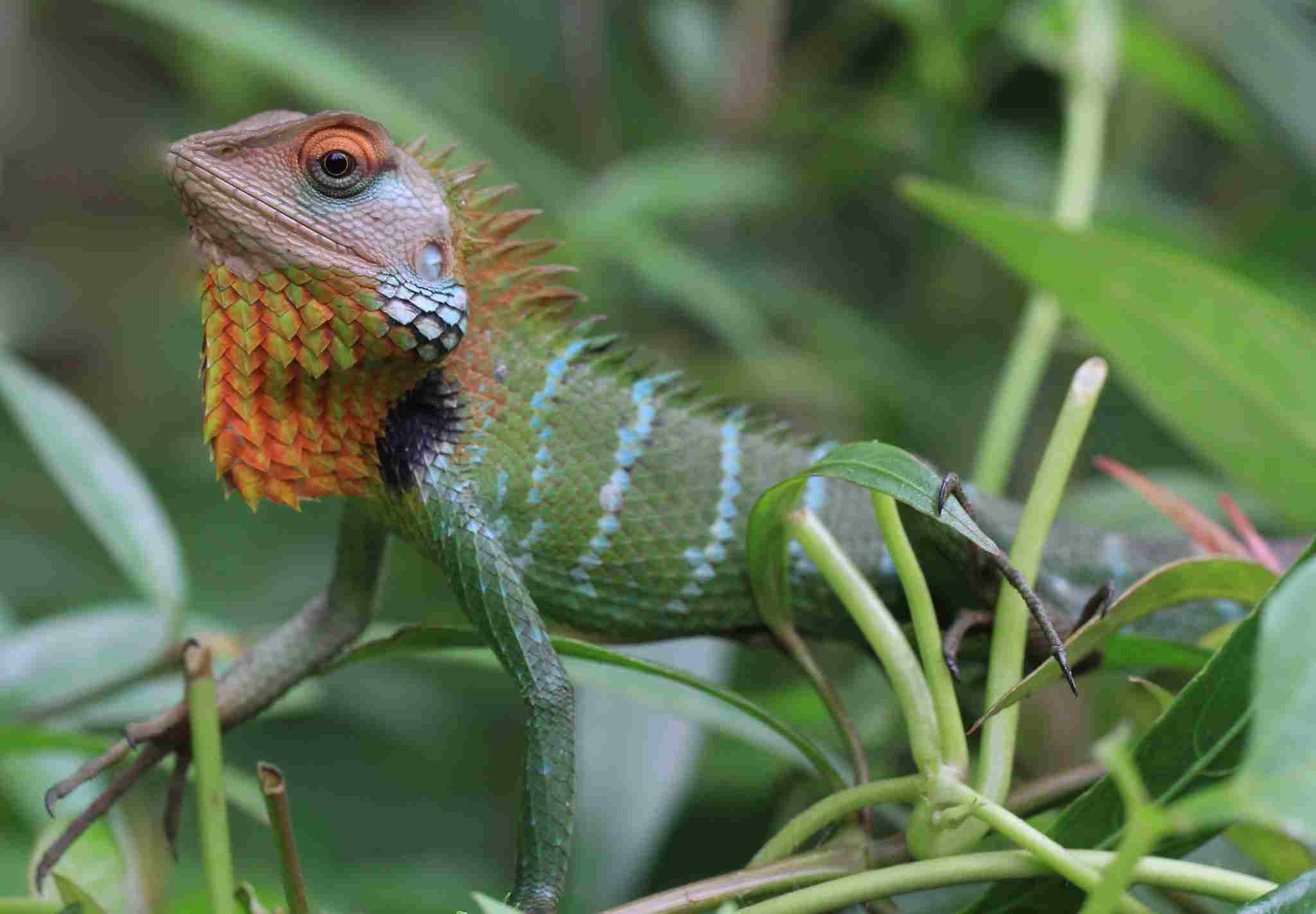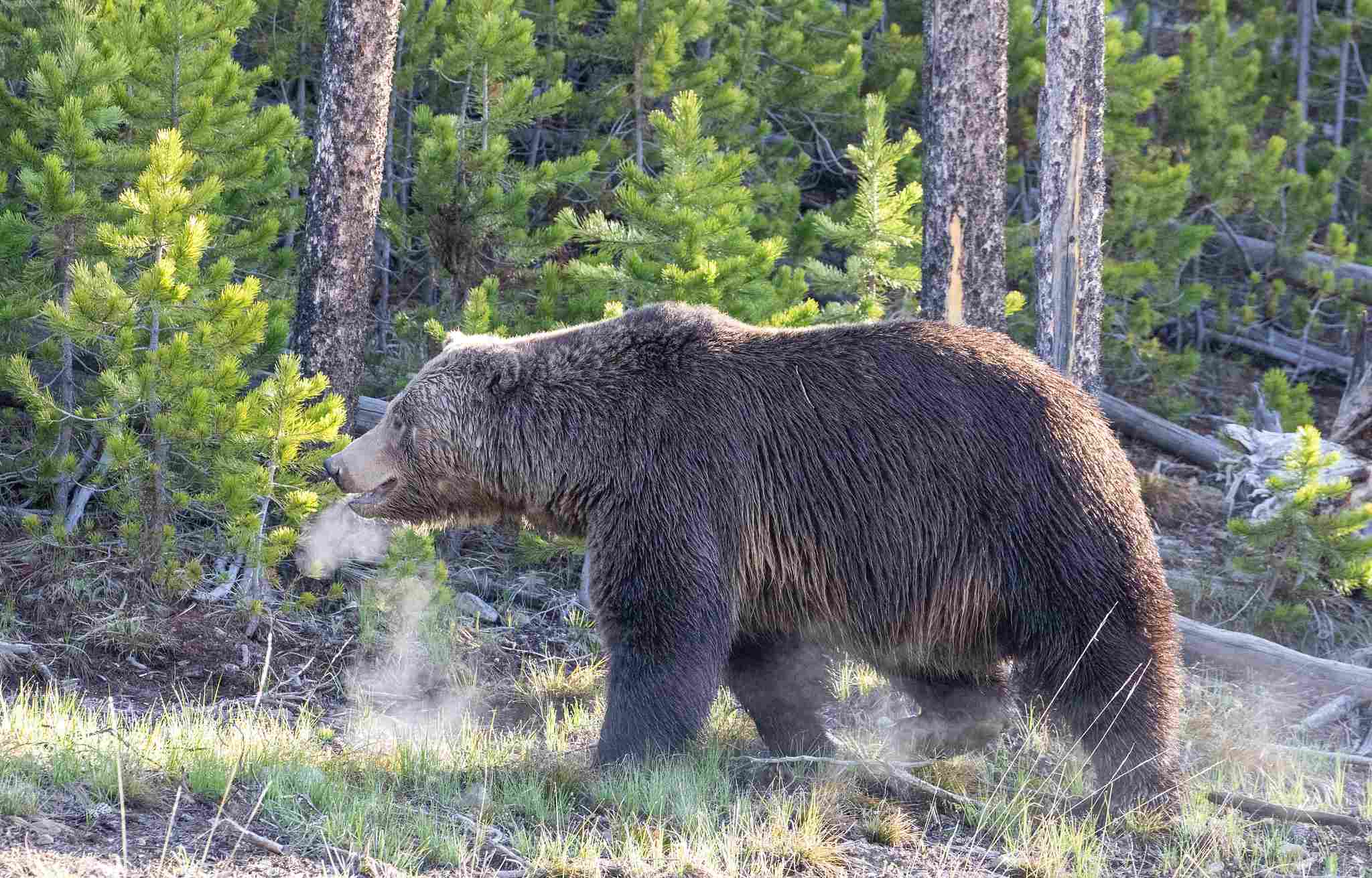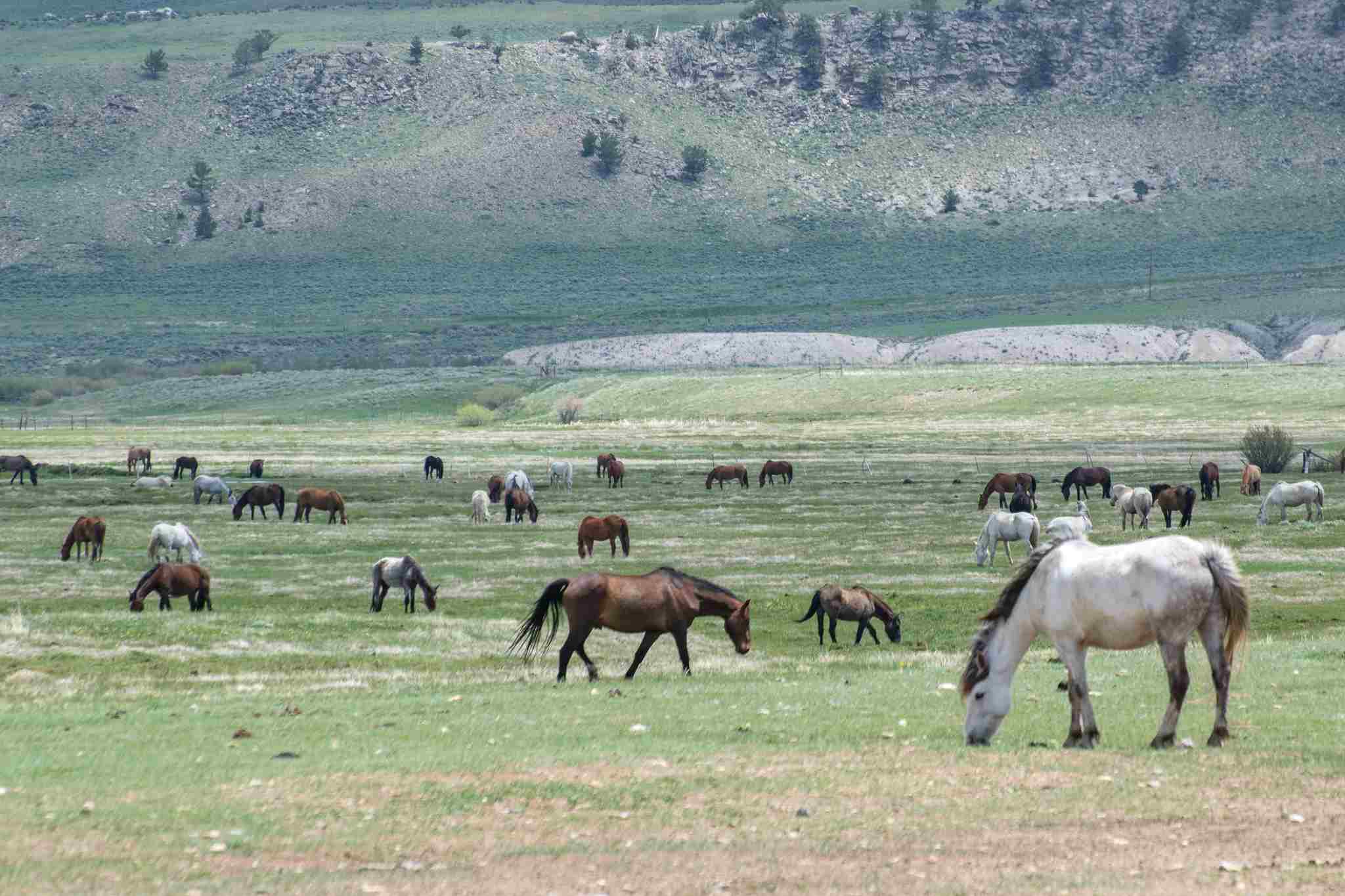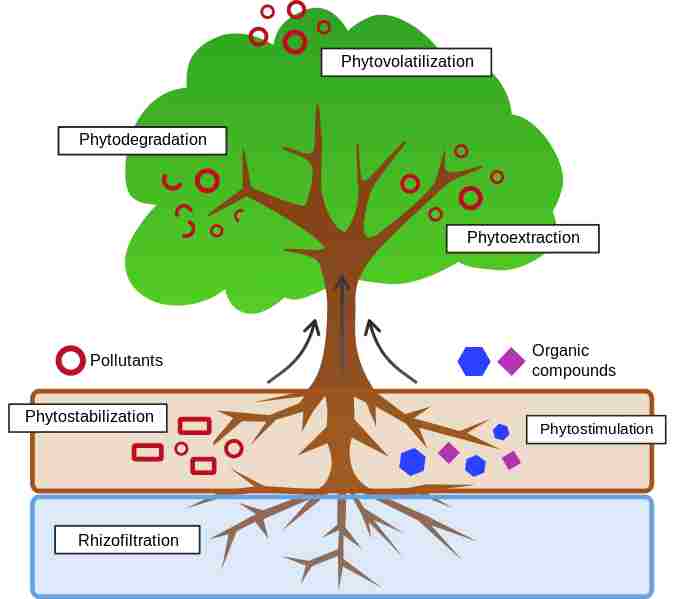What are the Types of Raccoons? An Overview of Species and Subspecies
The three main types of raccoons are the following species; Procyon lotor, Procyon Pygmaeus, and Procyon Cancrivorous; while there are over 20 subspecies, including Eastern racoon (P. l. lotor) and several others. This article discusses the types of raccoons in the world, in terms of recognized species and subspecies.
Species of Raccoons
The world is home to various species of raccoons, each with its own unique characteristics and habitats. This section discusses three main species of raccoons: Procyon lotor, Procyon Pygmaeus, and Procyon Cancrivorous. These groups, along with their subspecies, contribute to the diverse types of raccoons found across different regions.
1. Procyon lotor
Procyon lotor, commonly known as the Eastern raccoon, is the most widespread and well-known species of raccoon. Native to North America, it can be found throughout the United States, Canada, and Mexico.
* The Eastern raccoon is also the dominant species in Florida, where it thrives in various habitats, including urban areas, forests, and wetlands.
* One distinguishing feature of the Eastern raccoon is its relatively pale coat, which ranges from grayish-brown to reddish-brown. This species has a distinctive black mask around its eyes and a bushy tail with alternating light and dark rings. Eastern raccoons are known for their adaptability and intelligence, allowing them to thrive in diverse environments.
2. Procyon Pygmaeus
Procyon Pygmaeus, also known as the Pygmy raccoon, is a smaller species of raccoon found exclusively on Cozumel Island, off the coast of Mexico’s Yucatan Peninsula.
* This species is critically endangered and is considered one of the rarest mammals in the world. The Pygmy raccoon has a distinct appearance, with a shorter snout and smaller body size compared to other raccoon species.
* Due to its limited habitat on Cozumel Island, the Pygmy raccoon faces numerous threats, including habitat loss and predation by introduced species. Conservation efforts are underway to protect this unique and vulnerable species from extinction.
3. Procyon Cancrivorous
Procyon Cancrivorous, commonly known as the Crab-eating raccoon, is native to Central and South America. This species can be found in various habitats, including mangroves, rainforests, and coastal areas. Despite its name, the Crab-eating raccoon has a diverse diet that includes not only crabs but also fish, fruits, and small mammals.
* The Crab-eating raccoon has a similar appearance to the Eastern raccoon, with a grayish-brown coat and a black mask around its eyes. However, it tends to have a more slender body and longer limbs. This species has adapted well to its coastal habitats and is known for its excellent swimming and climbing abilities.
Subspecies of Raccoons
In addition to the main species of raccoons, there are numerous subspecies that contribute to the overall diversity of these fascinating creatures. These subspecies can be listed among the types of raccoons, bringing the total number to approximately 26 different types.
One notable subspecies is the Eastern raccoon (P. l. lotor), which is the most widespread and well-known raccoon species. Native to North America, it can be found throughout the United States, Canada, and Mexico. The Eastern raccoon is known for its adaptability and intelligence, allowing it to thrive in various habitats, including urban areas, forests, and wetlands.
Another subspecies worth mentioning is the Key Vaca raccoon (P. l. auspicatus), which is found exclusively in the Florida Keys. This subspecies has adapted to the unique island environment and is known for its resourcefulness in finding food and shelter.
The Florida raccoon (P. l. elucus) is another subspecies that thrives in the diverse habitats of Florida, including swamps, marshes, and coastal areas. It has a slightly different appearance compared to the Eastern raccoon, with a darker coat and a more robust build.
These are just a few examples of the subspecies of raccoons that exist (all of which are discussed in this article). Each subspecies has its own distinct characteristics and adaptations that allow it to thrive in its habitat.
1. Eastern raccoon (P. l. lotor)
The Eastern raccoon (P. l. lotor) is one of the most well-known and widespread species of raccoons. Native to North America, it can be found throughout the United States, Canada, and Mexico. This adaptability has allowed the Eastern raccoon to thrive in various habitats, including urban areas, forests, and wetlands.
* One of the key characteristics of the Eastern raccoon is its intelligence. This species has demonstrated remarkable problem-solving abilities, making it highly adaptable to changing environments. It is known for its dexterity and ability to manipulate objects, which has earned it a reputation for being mischievous and curious.
* The Eastern raccoon has a distinctive appearance, with a grayish-brown fur coat, a black mask around its eyes, and a ringed tail. It has a stocky build and can weigh anywhere from 10 to 30 pounds, depending on its location and available food sources.
* In spite of its adaptability, the Eastern raccoon faces various threats, including habitat loss, vehicle collisions, and diseases. However, due to its ability to thrive in different environments, this species has managed to maintain stable populations.
* The Eastern raccoon is just one example of the diverse species of raccoons that exist. Each species has its own unique characteristics and adaptations that allow it to survive in its specific habitat. From the urban jungles of cities to the dense forests and wetlands, raccoons have found a way to coexist with humans and other wildlife.
* Studying the attributes of different species of raccoons is important for conservation efforts and for appreciating the biodiversity of these creatures. By studying their behaviors, habitats, and interactions with the environment, researchers can gain useful insights into the ecological roles that raccoons play.
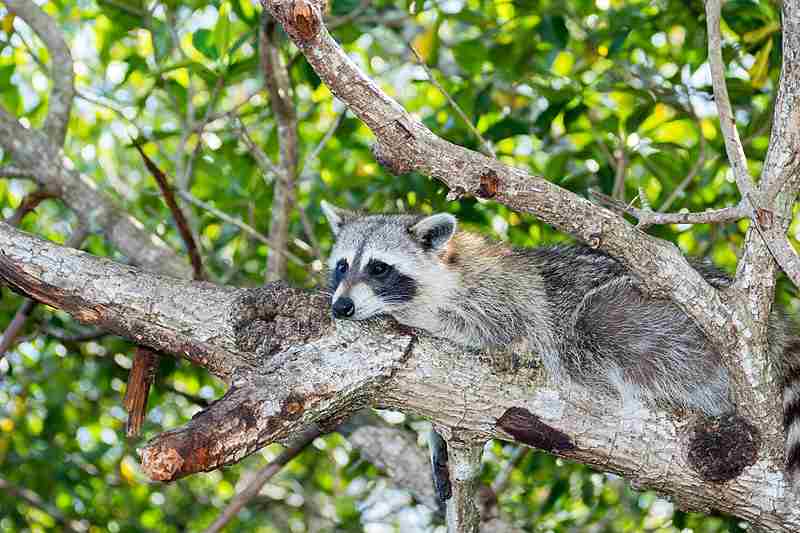
2. Key Vaca raccoon (P. l. auspicatus)
The Key Vaca raccoon (P. l. auspicatus) is a subspecies of raccoon that is native to the Florida Keys, specifically the island of Key Vaca. This subspecies is unique to this region and has adapted to the specific environmental conditions found in the Florida Keys.
* One of the key characteristics of the Key Vaca raccoon is its smaller size compared to other raccoon subspecies. They typically weigh between 6 to 12 pounds, making them significantly smaller than their counterparts in other parts of North America. This smaller size is believed to be an adaptation to the limited resources and food availability on the island.
* The Key Vaca raccoon has a similar appearance to other raccoon subspecies, with a grayish-brown fur coat, a black mask around its eyes, and a ringed tail.
However, due to its isolation on the island, it has developed some unique physical traits. For example, Key Vaca raccoons have been observed to have shorter legs and a more slender body shape compared to other raccoon subspecies.
* In terms of behavior, the Key Vaca raccoon exhibits similar traits to other raccoons, such as their intelligence and curiosity. They are known for their ability to problem-solve and adapt to their surroundings. However, due to the limited resources on the island, Key Vaca raccoons have developed specific foraging techniques and behaviors to maximize their chances of finding food.
* The habitat of the Key Vaca raccoon is primarily coastal, including mangrove forests and coastal wetlands. These habitats provide the necessary resources for their survival, including food sources such as crabs, fish, and other small marine creatures.
The Key Vaca raccoon has also adapted to the unique challenges of living in a coastal environment, such as dealing with tidal fluctuations and saltwater exposure.
Conservation efforts for the Key Vaca raccoon are crucial due to its limited range and vulnerability to habitat loss and human disturbance. Protecting the natural habitats of the Florida Keys is essential for the survival of this subspecies and the overall biodiversity of the region.
3. Florida raccoon (P. l. elucus)
The Florida raccoon (P. l. elucus) is a subspecies of raccoon that is native to the state of Florida. This particular subspecies is found throughout the state, from the panhandle to the southernmost tip of the peninsula.
* One of the distinguishing features of the Florida raccoon is its larger size compared to other raccoon subspecies. They can weigh anywhere from 10 to 30 pounds, making them one of the larger raccoon subspecies in North America. This larger size is believed to be an adaptation to the diverse range of habitats found in Florida, including forests, swamps, and urban areas.
* In terms of appearance, the Florida raccoon shares many similarities with other raccoon subspecies. They have a dense fur coat that is typically grayish-brown in color, with a black mask around their eyes and a ringed tail. However, there may be some variations in coloration and markings among individuals.
* The behavior of the Florida raccoon is similar to that of other raccoons. They are known for their intelligence and adaptability, which allows them to thrive in a variety of environments. Florida raccoons are opportunistic feeders and will consume a wide range of foods, including fruits, nuts, insects, small mammals, and even garbage in urban areas.
* The habitat of the Florida raccoon is diverse, ranging from forests and wetlands to suburban and urban areas. They are highly adaptable and can be found in both natural and human-altered landscapes. However, they are most commonly associated with wetland habitats, such as marshes and swamps, where they can find abundant food sources and suitable denning sites.
* Conservation efforts for the Florida raccoon are important to ensure the long-term survival of this subspecies. Habitat loss and fragmentation, as well as conflicts with humans, pose significant threats to their populations. Protecting and preserving their natural habitats, as well as implementing measures to mitigate human-wildlife conflicts, are crucial for the conservation of the Florida raccoon.
4. Snake River Valley raccoon (P. l. excelsus)
The Snake River Valley raccoon (P. l. excelsus) is a subspecies of raccoon that is native to the Snake River Valley region in the western United States. This particular subspecies is found in the states of Idaho, Oregon, and Washington, where it inhabits the riparian areas along the Snake River and its tributaries.
* One of the distinguishing features of the Snake River Valley raccoon is its adaptability to the arid and semi-arid environments of the region. Unlike other raccoon subspecies, which are typically associated with wetland habitats, the Snake River Valley raccoon has adapted to the drier conditions found in its range.
This subspecies has developed a preference for riparian areas, where water sources are more abundant, and vegetation provides cover and food resources.
* In terms of appearance, the Snake River Valley raccoon shares many similarities with other raccoon subspecies. It has a dense fur coat that is typically grayish-brown in color, with a black mask around its eyes and a ringed tail. However, there may be some variations in coloration and markings among individuals.
* The behavior and diet of the Snake River Valley raccoon are similar to those of other raccoon subspecies. They are opportunistic feeders and will consume a wide range of foods, including fruits, nuts, insects, small mammals, and even fish in riparian habitats. They are also known for their intelligence and adaptability, which allows them to thrive in the diverse landscapes of the Snake River Valley region.
Conservation efforts for the Snake River Valley raccoon are important to ensure the preservation of this subspecies. Habitat loss and fragmentation, as well as conflicts with humans, pose threats to their populations.
5. Texas raccoon (P. l. fuscipes)
The Texas raccoon (P. l. fuscipes) is a subspecies of raccoon that is native to the state of Texas in the United States. This particular subspecies is found throughout the state, inhabiting a variety of habitats including forests, swamps, and urban areas.
* One of the distinguishing features of the Texas raccoon is its larger size compared to other raccoon subspecies. Adult Texas raccoons can weigh up to 30 pounds, making them one of the largest raccoon subspecies in North America.
* In terms of appearance, the Texas raccoon shares many similarities with other raccoon subspecies. It has a dense fur coat that is typically grayish-brown in color, with a black mask around its eyes and a ringed tail. However, there may be some variations in coloration and markings among individuals.
* The behavior and diet of the Texas raccoon are similar to those of other raccoon subspecies. They are opportunistic feeders and will consume a wide range of foods, including fruits, nuts, insects, small mammals, and even fish in aquatic habitats. They are also known for their adaptability and ability to thrive in both natural and urban environments.
6. Barbados raccoon (P. l. gloveralleni)
The Barbados raccoon (P. l. gloveralleni) is a unique subspecies of raccoon that is endemic to the island of Barbados in the Caribbean. This subspecies is known for its small size and distinct physical characteristics.
* One of the important features of the Barbados raccoon is its smaller body size compared to other raccoon subspecies. Adult Barbados raccoons typically weigh between 4 to 7 pounds, making them significantly smaller than their counterparts in other regions.
* In terms of appearance, the Barbados raccoon has a dense fur coat that is typically reddish-brown in color. It has a black mask around its eyes and a ringed tail, similar to other raccoon subspecies. However, the Barbados raccoon has shorter legs and a more compact body structure.
* Due to its limited geographic range, the Barbados raccoon faces unique challenges and threats. Habitat loss and fragmentation, as well as predation by introduced species, have contributed to its declining population. Conservation efforts are underway to protect this endangered subspecies and its habitat.
* The diet of the Barbados raccoon consists mainly of fruits, insects, and small vertebrates. It is also known to feed on agricultural crops, which has led to conflicts with local farmers.
7. Baja California raccoon (P. l. grinnelli)
The Baja California raccoon (P. l. grinnelli) is a subspecies of raccoon that is native to the Baja California Peninsula in Mexico. This subspecies is known for its unique habitat and adaptations.
* A distinguishing feature of the Baja California raccoon is its smaller size compared to other raccoon subspecies. Adult Baja California raccoons typically weigh between 6 to 10 pounds, making them relatively smaller in size.
* In terms of appearance, the Baja California raccoon has a dense fur coat that is typically grayish-brown in color. It has a black mask around its eyes and a ringed tail, similar to other raccoon subspecies. However, the Baja California raccoon has longer legs and a slender body structure, which allows it to navigate its rocky habitat more efficiently.
* The Baja California raccoon is primarily found in the desert and coastal areas of the Baja California Peninsula. It has adapted to the arid conditions by having a more efficient water metabolism and a diet that includes a variety of desert plants, insects, small mammals, and crustaceans.
* Due to its limited range and specific habitat requirements, the Baja California raccoon is considered a vulnerable subspecies. Habitat loss, fragmentation, and human disturbance are the main threats to its population. Conservation efforts are focused on protecting its habitat and raising awareness about the importance of preserving this unique subspecies.
8. Mexican plateau raccoon (P. l. hernandezii)
The Mexican plateau raccoon (P. l. hernandezii) is a subspecies of raccoon that is native to the Mexican Plateau region. This subspecies is known for its unique adaptations and habitat preferences.
* One notable feature of the Mexican plateau raccoon is its larger size compared to other raccoon subspecies. Adult Mexican plateau raccoons can weigh between 15 to 25 pounds, making them relatively larger in size. They have a robust body structure and muscular limbs, which allows them to thrive in their specific habitat.
* In terms of appearance, the Mexican plateau raccoon has a dense fur coat that is typically grayish-brown in color. It has a black mask around its eyes and a ringed tail, similar to other raccoon subspecies. However, the Mexican plateau raccoon has a broader head and shorter ears, which are adaptations to its environment.
* The Mexican plateau raccoon is primarily found in the high-altitude regions of the Mexican Plateau, including the states of Mexico, Hidalgo, and Queretaro. It has adapted to the cooler temperatures and mountainous terrain by developing a thicker fur coat and a diet that includes a variety of fruits, nuts, insects, and small vertebrates.
* Conservation efforts for the Mexican plateau raccoon focus on protecting its habitat from deforestation and human encroachment. The subspecies is currently listed as near threatened due to habitat loss and fragmentation. It serves as an important indicator of the health of the Mexican Plateau ecosystem and the need for conservation efforts in the region.
9. Upper Mississippi Valley raccoon (P. l. hirtus)
The Upper Mississippi Valley raccoon (P. l. hirtus) is a subspecies of raccoon that is native to the Upper Mississippi Valley region in the United States. This subspecies is known for its unique characteristics and adaptations to its specific habitat.
* One notable feature of the Upper Mississippi Valley raccoon is its adaptability to various environments. It can thrive in both rural and urban areas, making it a highly adaptable species. This adaptability has allowed the raccoon to expand its range and successfully colonize new territories.
* In terms of appearance, the Upper Mississippi Valley raccoon closely resembles other raccoon subspecies. It has a dense fur coat that is typically grayish-brown in color, with a black mask around its eyes and a ringed tail. However, the Upper Mississippi Valley raccoon is slightly smaller in size compared to other subspecies, with adults weighing between 10 to 20 pounds.
* The Upper Mississippi Valley raccoon is primarily found in the states of Minnesota, Wisconsin, Iowa, and Illinois, which make up the Upper Mississippi Valley region. It prefers habitats near water sources, such as rivers, lakes, and wetlands. These habitats provide the raccoon with ample food sources, including fish, amphibians, crustaceans, and small mammals.
Conservation efforts for the Upper Mississippi Valley raccoon focus on preserving its natural habitat and managing human-wildlife interactions. The raccoon’s adaptability to urban areas has led to conflicts with humans, particularly in relation to property damage and the spread of diseases. Implementing measures to mitigate these conflicts is crucial for the coexistence of humans and raccoons in the region.
10. Torch Key raccoon (P. l. incautus)
The Torch Key raccoon (P. l. incautus) is a subspecies of raccoon that is native to Torch Key, an island located in the Florida Keys. This subspecies is known for its unique characteristics and adaptations to its specific habitat.
One notable feature of the Torch Key raccoon is its ability to thrive in a tropical environment. The warm climate and abundant vegetation on Torch Key provide the raccoon with ample food sources, including fruits, nuts, and small invertebrates. This subspecies has also developed excellent climbing and swimming skills, allowing it to navigate the island’s diverse terrain.
In terms of appearance, the Torch Key raccoon closely resembles other raccoon subspecies. It has a dense fur coat that is typically grayish-brown in color, with a black mask around its eyes and a ringed tail. However, the Torch Key raccoon is slightly smaller in size compared to other subspecies, with adults weighing between 10 to 15 pounds.
The Torch Key raccoon is endemic to Torch Key and is not found anywhere else in the world. Due to its limited range, conservation efforts for this subspecies focus on preserving its natural habitat and protecting it from human disturbances. The Torch Key raccoon plays an important role in the island’s ecosystem by dispersing seeds and controlling populations of small animals.
11. Matecumbe Key raccoon (P. l. inesperatus)
The Matecumbe Key raccoon (P. l. inesperatus) is a subspecies of raccoon that is native to Matecumbe Key, a small island located in the Florida Keys. This subspecies has unique characteristics and adaptations that allow it to thrive in its specific habitat.
A notable feature of the Matecumbe Key raccoon is its ability to adapt to both terrestrial and aquatic environments. This subspecies has developed excellent swimming skills, which enable it to forage for food in the surrounding waters. It primarily feeds on aquatic plants, small fish, and crustaceans, making it a versatile and opportunistic eater.
Physiologically, the Matecumbe Key raccoon closely resembles other raccoon subspecies. It has a dense fur coat that is typically grayish-brown in color, with a black mask around its eyes and a ringed tail. However, the Matecumbe Key raccoon is slightly smaller in size compared to other subspecies, with adults weighing between 10 to 15 pounds.
The Matecumbe Key raccoon is endemic to Matecumbe Key and is not found anywhere else in the world. Due to its limited range, conservation efforts for this subspecies focus on preserving its natural habitat and protecting it from human disturbances. The Matecumbe Key raccoon plays a vital role in the island’s ecosystem by contributing to seed dispersal and maintaining a balanced population of aquatic organisms.
12. Tres Marias raccoon (P. l. insularis)
The Tres Marias raccoon (P. l. insularis) is a subspecies of raccoon that is endemic to the Tres Marias Islands, located off the coast of Mexico. These islands provide a unique habitat for this raccoon subspecies, allowing it to develop distinct characteristics and adaptations.
One notable feature of the Tres Marias raccoon is its smaller size compared to other raccoon subspecies. Adult Tres Marias raccoons typically weigh between 6 to 10 pounds, making them one of the smallest raccoon subspecies. This smaller size is believed to be an adaptation to the limited resources available on the islands.
The Tres Marias raccoon has a dense fur coat that is typically grayish-brown in color, with a black mask around its eyes and a ringed tail, similar to other raccoon subspecies. However, its fur is often lighter in color compared to mainland raccoons, which may be an adaptation to the island’s environment.
Due to the isolation of the Tres Marias Islands, the Tres Marias raccoon has evolved in relative isolation from other raccoon populations. This has led to genetic differences between the Tres Marias raccoon and mainland raccoons. Conservation efforts for this subspecies focus on protecting its unique genetic diversity and preserving its habitat on the Tres Marias Islands.
The Tres Marias raccoon plays a crucial role in the island’s ecosystem by contributing to seed dispersal and controlling populations of small mammals and invertebrates. However, like many other raccoon subspecies, it faces threats such as habitat loss and fragmentation, as well as potential introduction of invasive species to the islands.
13. Saint Simon Island raccoon (P. l. litoreus)
The Saint Simon Island raccoon (P. l. litoreus) is a subspecies of raccoon that is native to Saint Simon Island, a barrier island located off the coast of Georgia, United States. This raccoon subspecies has adapted to the unique coastal environment of the island, developing distinct characteristics and behaviors.
A distinguishing attribute of the Saint Simon Island raccoon is its larger size compared to other raccoon subspecies. Adult Saint Simon Island raccoons can weigh up to 30 pounds, making them one of the largest raccoon subspecies. This larger size is believed to be an adaptation to the abundance of food resources available on the island, including shellfish and other coastal prey.
The fur coat of the Saint Simon Island raccoon is typically grayish-brown in color, with a black mask around its eyes and a ringed tail, similar to other raccoon subspecies. However, due to the island’s sandy environment, the fur of these raccoons may appear lighter in color compared to mainland raccoons.
The Saint Simon Island raccoon is known for its ability to swim and climb trees, which are essential skills for navigating its coastal habitat. These raccoons are also highly adaptable and have been observed foraging in both natural and urban environments on the island.
Conservation efforts for the Saint Simon Island raccoon focus on protecting its habitat and managing potential conflicts with human populations. The raccoons play a vital role in the island’s ecosystem by controlling populations of small mammals and invertebrates, as well as contributing to seed dispersal.
14. Ten Thousand Islands raccoon (P. l. marinus)
The Ten Thousand Islands raccoon (P. l. marinus) is a subspecies of raccoon that inhabits the Ten Thousand Islands region in southwestern Florida, United States. This unique subspecies has adapted to the diverse and dynamic coastal environment of the area, showcasing distinct characteristics and behaviors.
One notable feature of the Ten Thousand Islands raccoon is its smaller size compared to other raccoon subspecies. Adult Ten Thousand Islands raccoons typically weigh between 10 to 15 pounds, making them one of the smallest raccoon subspecies. This smaller size is believed to be an adaptation to the limited food resources available in the islands, such as crabs, fish, and small mammals.
The fur coat of the Ten Thousand Islands raccoon is typically dark brown or black, with a black mask around its eyes and a ringed tail, similar to other raccoon subspecies. However, due to the unique coastal environment of the Ten Thousand Islands, these raccoons may have a slightly lighter coloration to blend in with the sandy beaches and mangrove forests.
Ten Thousand Islands raccoons are skilled swimmers and climbers, allowing them to navigate the intricate network of waterways and trees in their habitat. They are also known for their resourcefulness and adaptability, often foraging for food in both natural and human-altered environments.
Conservation efforts for the Ten Thousand Islands raccoon focus on preserving the delicate coastal ecosystem of the region and minimizing human-wildlife conflicts. These raccoons play a crucial role in maintaining the balance of the local ecosystem by controlling populations of small mammals and contributing to seed dispersal.
15. Bahamian raccoon (P. l. maynardi)
The Bahamian raccoon (P. l. maynardi) is a unique subspecies of raccoon found exclusively in the Bahamas. These raccoons have adapted to the island environment and display distinct characteristics that set them apart from other raccoon species.
One notable feature of the Bahamian raccoon is its smaller size compared to other raccoon subspecies. Adult Bahamian raccoons typically weigh between 8 to 12 pounds, making them one of the smallest raccoon subspecies. This smaller size is believed to be an adaptation to the limited food resources available on the islands, such as fruits, insects, and small vertebrates.
The fur coat of the Bahamian raccoon is typically a mix of gray and brown, with a black mask around its eyes and a ringed tail, similar to other raccoon subspecies. However, due to the unique island environment, these raccoons may have variations in coloration to blend in with their surroundings.
Bahamian raccoons are skilled climbers and swimmers, allowing them to navigate the diverse habitats found on the islands. They are known for their resourcefulness and adaptability, often foraging for food in both natural and human-altered environments.
Conservation efforts for the Bahamian raccoon focus on protecting their natural habitats and raising awareness about the importance of preserving the unique biodiversity of the Bahamas. These raccoons play a vital role in the island ecosystem by controlling populations of small vertebrates and contributing to seed dispersal.
16. Mississippi Delta raccoon (P. l. megalodous)
The Mississippi Delta raccoon (P. l. megalodous) is a subspecies of raccoon that is native to the Mississippi Delta region in the United States. These raccoons have adapted to the unique environment of the delta and have distinct characteristics that set them apart from other raccoon species.
Compared to other raccoon subspecies, the Mississippi Delta raccoon is larger in size. Adult Mississippi Delta raccoons can weigh up to 30 pounds, making them one of the largest raccoon subspecies. This larger size is believed to be an adaptation to the abundance of food resources available in the delta, such as fish, amphibians, and small mammals.
The fur coat of the Mississippi Delta raccoon is typically a mix of gray and brown, with a black mask around its eyes and a ringed tail, similar to other raccoon subspecies. However, due to the unique delta environment, these raccoons may have variations in coloration to blend in with their surroundings.
Mississippi Delta raccoons are excellent swimmers and are known for their ability to catch fish and other aquatic prey. They are also skilled climbers, allowing them to navigate the dense vegetation found in the delta region.
Conservation efforts for the Mississippi Delta raccoon focus on preserving their natural habitats and ensuring the sustainability of the delta ecosystem. These raccoons play a crucial role in maintaining the balance of the delta’s wildlife populations and contribute to the overall biodiversity of the region.
17. Guadeloupe raccoon (P. l. minor)
The Guadeloupe raccoon (P. l. minor) is a subspecies of raccoon that is native to the Caribbean island of Guadeloupe. This unique raccoon subspecies is found only on this island and is known for its distinct characteristics and adaptations.
One of the notable features of the Guadeloupe raccoon is its smaller size compared to other raccoon subspecies. Adult Guadeloupe raccoons typically weigh between 6 to 10 pounds, making them significantly smaller than their counterparts in other regions. This smaller size is believed to be an adaptation to the limited resources and competition on the island.
The fur coat of the Guadeloupe raccoon is typically a mix of gray and brown, with a black mask around its eyes and a ringed tail, similar to other raccoon subspecies. However, due to the unique environment of Guadeloupe, these raccoons may have variations in coloration to blend in with their surroundings.
Guadeloupe raccoons are highly adaptable and have been able to thrive in various habitats on the island, including forests, mangroves, and urban areas. They are omnivorous and have a diverse diet that includes fruits, insects, small vertebrates, and even human food scraps.
Efforts of conserve Guadeloupe raccoons, focus on protecting their natural habitats and raising awareness about their importance in the island’s ecosystem. Due to habitat loss and human activities, the population of Guadeloupe raccoons is currently declining, making their conservation a priority for the island’s biodiversity.
18. Pacific Northwest raccoon (P. l. pacificus)
The Pacific Northwest raccoon (P. l. pacificus) is a subspecies of raccoon that is native to the Pacific Northwest region of North America. This particular subspecies is found in the coastal areas of Washington, Oregon, and British Columbia, Canada.
One distinguishing characteristic of the Pacific Northwest raccoon is its larger size compared to other raccoon subspecies. Adult Pacific Northwest raccoons can weigh between 15 to 25 pounds, making them significantly larger than their counterparts in other regions. This size difference is believed to be an adaptation to the colder climate and the abundance of food sources in the area.
The fur coat of the Pacific Northwest raccoon is typically dark brown or black, with a bushy tail and a black mask around its eyes. This coloration helps them blend in with the dense forests and wooded areas of the region.
Pacific Northwest raccoons are highly adaptable and can be found in a variety of habitats, including forests, wetlands, and urban areas. They are opportunistic omnivores, feeding on a diverse diet that includes fruits, nuts, insects, small mammals, and even garbage.
In general, conservation efforts for the Pacific Northwest raccoon focus on preserving their natural habitats and minimizing human-wildlife conflicts. As urbanization continues to expand in the region, it is important to create wildlife corridors and implement measures to prevent raccoon-human interactions.
19. Colorado Desert raccoon (P. l. pallidus)
The Colorado Desert raccoon (P. l. pallidus) is a subspecies of raccoon that is native to the Colorado Desert region of southeastern California. This particular subspecies has adapted to the arid and desert-like conditions of its habitat.
A distinguishing characteristic of the Colorado Desert raccoon is its lighter fur coloration compared to other raccoon subspecies. The fur coat of the Colorado Desert raccoon is typically pale gray or light brown, which helps them blend in with the sandy and rocky terrain of the desert.
Colorado Desert raccoons have developed some survival strategies to thrive in their harsh environment. They have the ability to conserve water and can go for extended periods without drinking. They also have a keen sense of smell and are skilled at locating water sources in the desert.
In terms of diet, Colorado Desert raccoons are opportunistic omnivores, feeding on a variety of plant and animal matter. They consume fruits, seeds, insects, small mammals, and even reptiles that are found in their desert habitat.
Conservation efforts for the Colorado Desert raccoon focus on preserving their fragile desert ecosystem. The destruction of their habitat due to urbanization and agriculture poses a threat to their survival. Efforts are being made to protect their natural habitat and raise awareness about the importance of preserving biodiversity in the Colorado Desert region.
20. California raccoon (P. l. psora)
The California raccoon (P. l. psora) is a highly versatile and adaptive subspecies of raccoon. Known for its agility as a climber, the California raccoon is also adept at navigating various environments by running or wading. This adaptability allows them to thrive in a wide range of habitats throughout California.
One of the notable characteristics of the California raccoon is its ability to climb trees with ease. Their agile climbing skills enable them to access food sources such as fruits, nuts, and bird eggs that are found in trees. However, unlike other raccoon subspecies, the California raccoon is not solely reliant on climbing. They have also developed the ability to navigate on the ground, running or wading through different terrains.
This subspecies can be found in diverse environments, including forests, grasslands, wetlands, and urban areas. They have adapted to human presence and are often seen in residential neighborhoods, searching for food in trash cans or gardens. Their ability to adapt to urban environments has contributed to their success as a species.
The California raccoon’s diet is varied and opportunistic. They are omnivorous, feeding on a wide range of food sources, including fruits, vegetables, insects, small mammals, and even fish. This adaptability in their diet allows them to survive and thrive in different ecosystems.
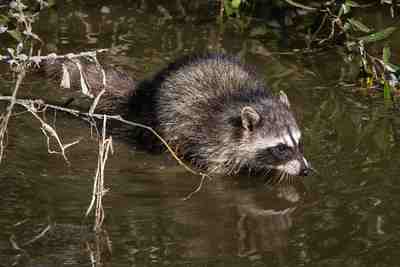
21. Isthmian raccoon (P. l. pumilus)
The Isthmian raccoon (P. l. pumilus) is a unique subspecies of raccoon that is native to the Isthmus of Panama. This region serves as a natural bridge connecting North and South America, making it a crucial habitat for various species, including the Isthmian raccoon.
One of the distinguishing attributes of the Isthmian raccoon is its smaller size compared to other raccoon subspecies. This adaptation allows them to navigate through the dense vegetation and narrow spaces of their habitat more easily. Their compact size also enables them to access food sources that may be inaccessible to larger raccoons.
The diet of the Isthmian raccoon consists of a variety of foods, including fruits, nuts, insects, small mammals, and crustaceans. They are opportunistic feeders and can adapt their diet based on the availability of resources in their environment. This flexibility in their feeding habits contributes to their survival in the ever-changing ecosystems of the Isthmus of Panama.
Due to the unique geographical location of the Isthmus of Panama, the Isthmian raccoon faces various challenges, including habitat fragmentation and human encroachment. Conservation efforts are crucial to protect this subspecies and ensure its long-term survival. By preserving their natural habitat and raising awareness about their importance, we can contribute to the conservation of the Isthmian raccoon and the biodiversity of the region.
22. Short-faced raccoon (P. l. simus)
The Short-faced raccoon (P. l. simus) is a fascinating subspecies of raccoon that is known for its unique facial features. As the name suggests, this raccoon has a shorter and more compact face compared to other raccoon subspecies. This distinctive characteristic sets it apart and makes it easily recognizable.
One of the key adaptations of the Short-faced raccoon is its specialized dentition. Their teeth are specifically designed to handle a diet that consists primarily of crustaceans and mollusks. This subspecies has strong and robust teeth that allow them to crack open shells and extract the nutritious contents inside. This specialized diet makes the Short-faced raccoon an important part of the coastal ecosystems where it is found.
The Short-faced raccoon is primarily found along the coastal regions of the Pacific Northwest, including parts of Oregon, Washington, and British Columbia. These raccoons have adapted to the unique challenges of their habitat, such as the rocky shorelines and dense forests. They are excellent climbers and swimmers, which allows them to navigate their environment with ease.
Deliberate conservation efforts are needed to protect the Short-faced raccoon and its habitat. The destruction of coastal habitats and pollution pose significant threats to their survival.
23. Vancouver Island raccoon (P. l. vancouverensis)
The Vancouver Island raccoon (P. l. vancouverensis) is a unique subspecies of raccoon that is native to Vancouver Island, located off the coast of British Columbia, Canada. This subspecies is known for its distinct characteristics and adaptations to its island habitat.
One notable feature of the Vancouver Island raccoon is its smaller size compared to other raccoon subspecies. They have a compact body and shorter limbs, which allows them to navigate through the dense forests and rocky terrain of the island. Their smaller size also enables them to access food sources that may be harder to reach for larger raccoons.
These raccoons have a varied diet, consisting of both plant and animal matter. They are opportunistic feeders and will consume fruits, nuts, insects, small mammals, and even fish when available. This adaptability in their diet allows them to thrive in the diverse ecosystems of Vancouver Island.
Due to their isolated island habitat, the Vancouver Island raccoon faces unique conservation challenges. Habitat loss, fragmentation, and human disturbance are significant threats to their population. Efforts are being made to protect their habitat and raise awareness about the importance of preserving this subspecies.
FAQs
1. Are There Racoons in Florida?
Yes, raccoons are found in Florida. The state is home to several species and subspecies of raccoons, including the Florida raccoon (P. l. elucus). These raccoons are adapted to the unique habitats found in Florida, such as wetlands, forests, and urban areas.
2. Are There Racoons in California?
Yes, raccoons are also found in California. The California raccoon (P. l. psora) is a subspecies that is native to the state. They can be found in various habitats, including forests, grasslands, and urban areas. California raccoons are known for their adaptability and ability to thrive in different environments.
3. What are the Types of Racoons in Florida?
In Florida, you can find several types of raccoons, including the Florida raccoon (P. l. elucus). This subspecies is specifically adapted to the habitats found in Florida, such as marshes, swamps, and coastal areas. They have unique characteristics that allow them to survive in these environments.
4. What are the Types of Racoons in California?
In California, the California raccoon (P. l. psora) is the main type of raccoon found. This subspecies is well-adapted to the diverse habitats of the state, including forests, grasslands, and urban areas. They have distinct physical features and behaviors that set them apart from other raccoon subspecies.
5. How many Types of Raccoons are There?
As of 2023, there are three recognized species of raccoons: the common raccoon (Procyon lotor), the crab-eating raccoon (Procyon cancrivorus), and the Cozumel raccoon (Procyon pygmaeus). Additionally, there are approximately 23 recognized subspecies of raccoons, each with its own unique characteristics and adaptations. These subspecies are distributed across different regions of North and Central America.


